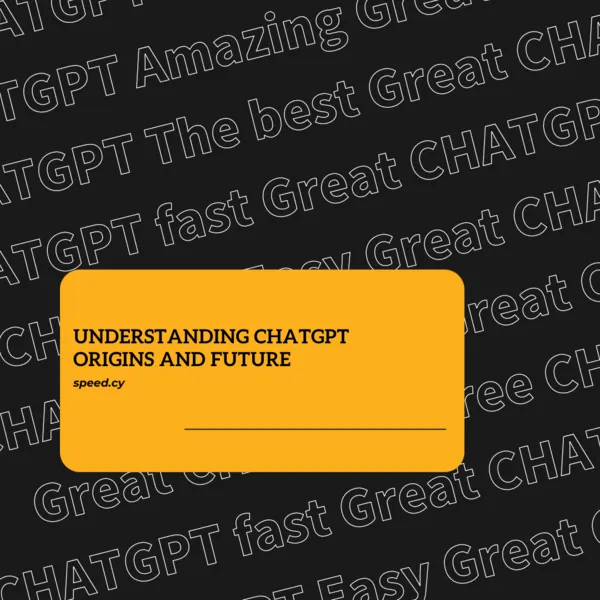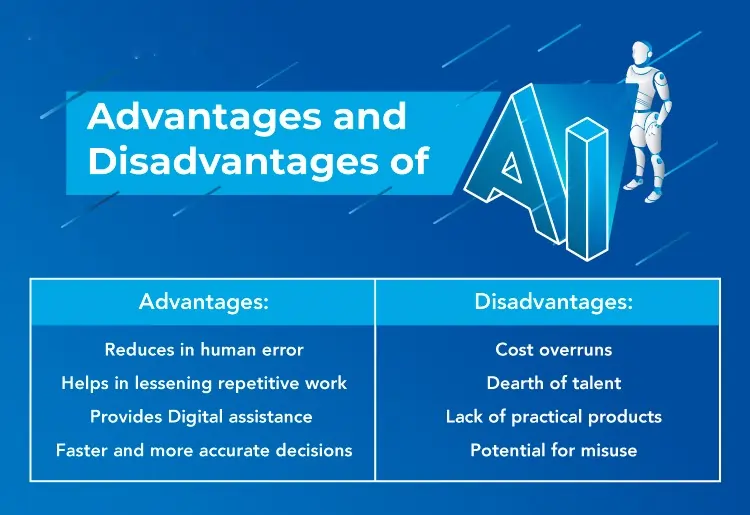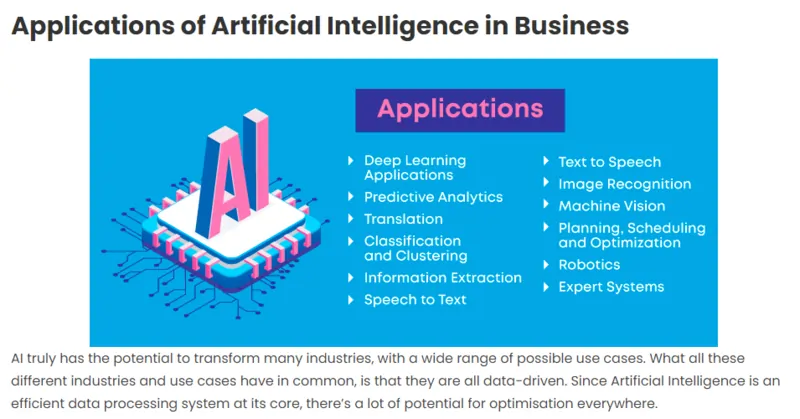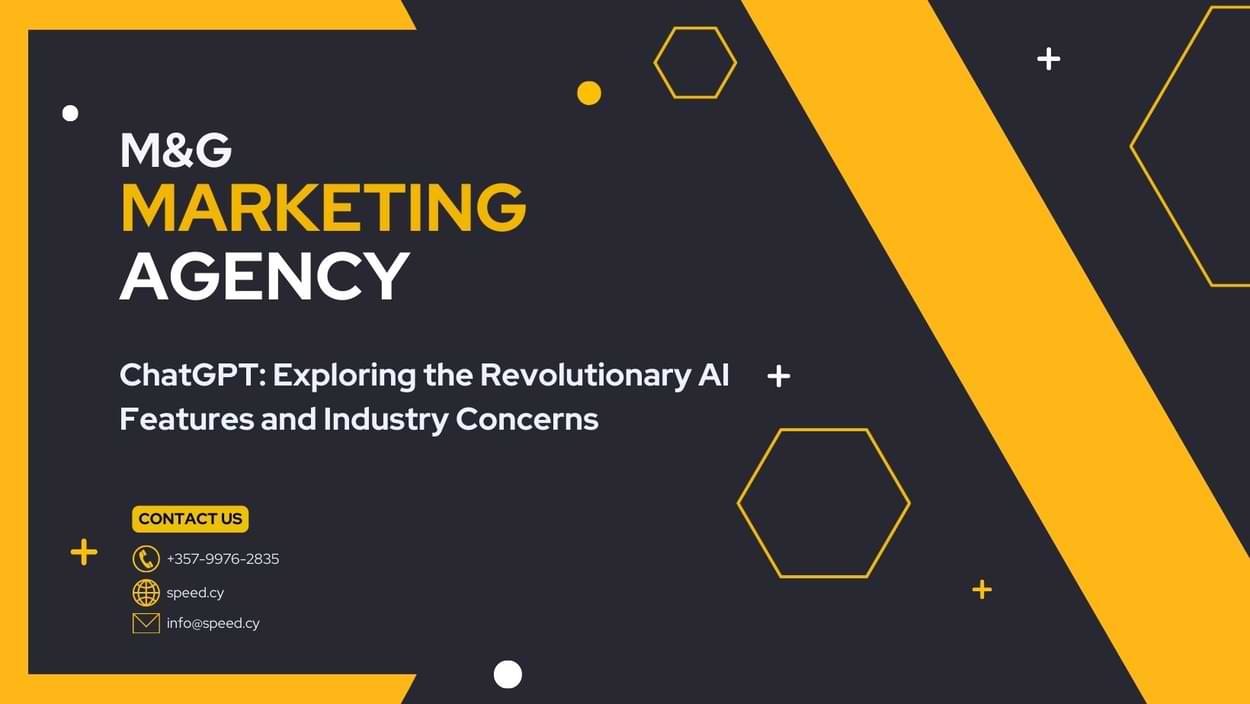ChatGPT, an acronym for Chat Generative Pre-Trained Transformer. It’s a large language model chatbot developed by OpenAI, stands out as a remarkable AI system that seamlessly blends factual accuracy, technical prowess, and conversational ease.
Powered by GPT-3.5 and GPT-4, for the time of writing, ChatGPT engages in meaningful conversations, effortlessly adapts to user preferences, and unlocks the vast potential of AI.
ChatGPT Hype!
Now, the thing is that ChatGPT has taken the world by storm seemingly overnight, in less than a year to be realistic. As an AI writer covering the latest technology trends, I’m fascinated by the buzz and hype surrounding this new conversational chatbot. In this article, I provide a comprehensive deep-dive into all-things ChatGPT.

ChatGPT’s human-like conversational abilities have captured attention worldwide. Its advanced natural language processing allows it to understand and respond to complex questions with eerie coherence and nuance. This suggests a major leap forward for making sophisticated AI accessible to the average user.
But how exactly does ChatGPT work? What are its capabilities and limitations? What are the implications for education, jobs, ethics and more? I delve into all of these issues in this article.
First, I explain what generative AI is and how it empowers ChatGPT. I reveal who created this mysterious chatbot and how it builds on decades of AI research.
I then demystify ChatGPT itself – how it utilizes neural networks and machine learning to have natural conversations. I assess its accuracy and abilities.
This leads into a balanced discussion of ChatGPT’s potential benefits as well as risks. I tackle vital questions around plagiarism, bias, privacy, and job displacement.
Additionally, I provide tips for accessing ChatGPT freely and examine where it may head in the future. I conclude by recapping ChatGPT’s revolutionary impact.
By the end, you’ll have a comprehensive understanding of this chatbot phenomenon – its inner workings, capabilities, limitations, and potential implications moving forward. So, let’s dive in!
The Rise of ChatGPT and Conversational AI
ChatGPT burst onto the scene in November 2022, attracting a million users in just 5 days. This bot can understand complex questions and respond with thoughtful, nuanced answers. It marks a major milestone in the rise of conversational AI.
I trace the evolution of chatbots leading up to ChatGPT. In the 1960s, ELIZA stunned people with natural language processing, though its capabilities were limited. In the 2000s, Siri pioneered virtual assistants. More recently, Alexa, Google Assistant and others entered homes.
ChatGPT proves far more advanced. Its human-like responses harness the power of generative AI, built on decades of NLP research and data training. Some experts believe it represents an “AI overlay” bringing sophisticated technology to the masses.
Microsoft, Meta, Google and others now scramble to compete with conversational AI. This likely marks the start of a new computing paradigm.
ChatGPT still has clear limitations, as I explore next. But its launch convincingly demonstrates how quickly conversational AI is coming of age, granting average users access to its possibilities.
This brings us to a key question: what exactly is generative AI, the technology empowering chatbots like ChatGPT?
Source: My Great Learning
Democratizing Access to Advanced AI Through Chatbots
ChatGPT intrigues people because it makes advanced AI accessible. This chatbot has democratized conversational AI.
In the past, leveraging AI required technical expertise. But ChatGPT’s user-friendly interface lets anyone ask questions and receive coherent responses. It handles a remarkable range of inquiries – from explaining scientific concepts to providing creative writing advice.
Under the hood, ChatGPT utilizes natural language processing to comprehend questions. Its generative algorithms then formulate understandable answers on the fly. This demonstrates rapid progress in “prompting” – giving AI enough context to complete tasks.
ChatGPT still makes mistakes, as generative AI has limitations. But its ability to democratize access to sophisticated NLP is groundbreaking.
Moving forward, Anthropic plans to integrate ChatGPT into other products, spreading its reach even further. Though risks exist, the potential to empower average users with AI is undeniable.
This brings us to a vital question: how exactly does generative AI work to enable chatbots like ChatGPT in the first place?

Generative AI: Producing Human-Like Content and Interactions
So how does ChatGPT work its magic? The key is generative AI – technology that can create original, human-like content.
Unlike past AI focused on analysis, generative AI can synthesize new information. It’s trained on massive datasets then generates brand new text, code, audio or images.
Chat GPT relies on natural language processing, allowing it to comprehend questions. Its generative algorithms then formulate conversational responses using patterns gleaned from immense training data.
This modeling enables ChatGPT to write poems, articles, code and more on demand. The AI creatively remixes its training to produce novel, coherent output.
Generative AI has powered breakthroughs in image generation, music synthesis and predictive text too. ChatGPT demonstrates its growing prowess in language tasks.
Experts believe generative AI marks an evolution of how people interact with technology. Its ability to mimic human conversation and creativity points to the dawn of more assistive, accessible AI.
But generative models still make mistakes, as they amplify biases in data. Risks exist, though the potential is enormous.
This brings us to the team who built this seemingly magical technology in the first place.
Ananova: The Mysterious Startup Behind the Chatbot Craze
ChatGPT’s sophisticated capabilities sprang from an obscure startup called Anthropic. Co-founded in 2021 by Dario Amodei and Daniela Amodei, Anthropic remained stealthy until unveiling ChatGPT late last year.
The Amodeis helped lead research at OpenAI, the prominent AI lab behind GPT-3 (which powers ChatGPT). They spun out Anthropic to build safer, more aligned AI.
Anthropic attracted $300 million in funding but shared few details about its work. It focused on “self-supervised learning,” training AI models like humans. This helps ChatGPT have more general knowledge.
The launch of ChatGPT shocked many experts, displaying the rapid progress Anthropic made in conversational AI. As a writer covering technology, I’m fascinated by this mysterious company pushing boundaries.
While risks exist, Anthropic’s mission to democratize access to advanced AI is bearing fruit. Its focus on safety may spur more responsible innovation.
Looking ahead, integration of ChatGPT into other products could greatly expand its reach. But how exactly does this chatbot operate behind the friendly interface?
Making Sense of the Machine: How ChatGPT Works Under the Hood
ChatGPT’s conversational abilities stem from advanced AI techniques powering it behind the scenes. As a writer covering emerging technology, I’ll shed light on how this chatbot actually works its magic.
First, ChatGPT leverages natural language processing to comprehend questions posed in plain English. This allows it to analyze what a prompt is asking.
Next, its algorithm pulls training data to formulate a response. ChatGPT was fed vast quantities of text, giving it a broad knowledge base.
The key is its use of neural networks – AI modeled after the human brain’s neurons. These networks can recognize patterns and generate new text based on its training.
So, while ChatGPT doesn’t actually understand language, its neural networks mimic remarkably human-like conversations.
Of course, the bot sometimes makes mistakes or says it doesn’t have enough context. But its capabilities relative to past chatbots are game-changing.
Looking ahead, enhancing ChatGPT’s training data and algorithms could make it even more powerful. But risks remain, as we’ll explore next.

Natural Language Processing and Neural Networks Power Chatbots
To fully appreciate ChatGPT, it helps to dive deeper into the key technologies enabling it – natural language processing (NLP) and neural networks.
NLP allows ChatGPT to actually comprehend questions posed in ordinary language. This field has advanced tremendously in recent years, powering chatbots.
NLP breaks down text to analyze sentence structure, context and meaning. This lets ChatGPT interpret the intent behind prompts.
Neural networks also represent a breakthrough in AI chatbots. These systems are modeled after the human brain, with interconnected nodes.
Through deep learning, these neural networks can recognize complex patterns. This lets ChatGPT generate surprisingly human-like conversational text.
Combining advanced NLP and neural networks enables the remarkable abilities of ChatGPT and other AI chatbots. Of course, risks remain as the technology continues evolving rapidly.
But by demystifying the processes behind ChatGPT, we can better understand its huge potential – along with ethical concerns I’ll explore next.
Opening Pandora's Box: The Possibilities and Perils of ChatGPT
ChatGPT represents a pivotal moment in AI history. Its launch opens up incredible new possibilities, but also poses risks.
On the positive side, ChatGPT could enhance education by providing on-demand tutoring. It may augment human creativity and productivity across many fields. This technology could even widen access to information.
However, concerns around misuse exist. ChatGPT could enable new forms of plagiarism and misinformation. It also raises concerns about privacy, job displacement and social manipulation.
As an AI writer, I believe generative models like ChatGPT demand scrutiny. But banning new technology is rarely the answer. More promising is responsible oversight and governance.
Moving forward, we must balance ChatGPT’s extraordinary potential benefits against its real perils. With wisdom and care, we can steer this genie towards human flourishing. But major questions loom about the ethics and control of AI.
This leads directly into the vital issue of how to address biases in ChatGPT – a key ethical challenge I examine next.
The Ethics of AI: Fighting Bias and Protecting Privacy
As ChatGPT grows more powerful, ethics become critical. One major concern is how bias gets embedded in AI like chatbots.
I examine ChatGPT’s known biases and transparency around its training data. While details remain limited, the system makes problematic statements about race, gender and other attributes.
This likely stems from biases in its original training datasets. I discuss mitigation efforts like techniques to “debias” AI models. Ongoing vigilance and diverse feedback are key to fairness.
Privacy represents another ethical challenge. I address how ChatGPT collects user data and Anthropic’s security practices. More openness on these issues is still needed.
In the right hands, ChatGPT could help reduce bias and empower marginalized groups. But unchecked AI risks amplifying harm against the vulnerable. Developing ethical, transparent AI remains an urgent priority.
This connects directly to the issue of democratizing access to ChatGPT and conversational AI more broadly.

Democratizing AI: Making ChatGPT Accessible to All
Despite hype, many people still can’t access ChatGPT due to waitlists and capacity limits. Truly democratizing AI requires expanding access.
I provide tips for using free limited versions of ChatGPT or exploring alternative chatbots. Widening access will require scaling up infrastructure and balancing costs.
There are also larger questions around the “digital divide” and who can benefit from emerging technology. Ensuring equal access across incomes and geographies remains challenging but essential.
If done responsibly, democratizing conversational AI could empower underserved communities with knowledge. Still, risks around job loss must also be addressed through policies like universal basic income.
With ethical oversight, ChatGPT’s core capabilities could someday improve lives for all of humanity. But inclusion and democratic values must drive its growth.
Looking ahead, what might the future hold for ChatGPT and other cutting-edge conversational AI?
The Future of Conversational AI: Where ChatGPT Goes from Here
ChatGPT already displays remarkable progress, but bigger advances likely lie ahead. I speculate on where this technology is headed next.
One trajectory is enhancements to ChatGPT’s accuracy. Its training algorithms and datasets could be improved to reduce mistakes. Integrating external knowledge bases could also help.
ChatGPT may also become multi-modal, able to understand and generate image, video and audio content. Seamless integration into virtual and augmented reality could enable richer conversational experiences.
Some predict ChatGPT will converge with robotic technology, powering real-world service interactions. More ambitious visions even foresee brain-computer integration one day.
But risks remain around monopolization of AI and loss of human agency. Avoiding dystopian outcomes will require inclusive governance of powerful technologies.
The path forward promises to be highly complex and contested. But if harnessed responsibly, conversational AI could profoundly expand human potential.

Unleashing Creativity and Expanding Knowledge
ChatGPT hints at AI’s potential to augment human abilities in remarkable ways. Some possible benefits include:
- Enhanced creativity - ChatGPT could help creators brainstorm fresh ideas, compose music, or refine writing drafts. Its interactive nature may spur new forms of art.
- Widened access to knowledge - The chatbot makes complex topics more graspable. It could help democratize learning for students worldwide.
- Boosted productivity - ChatGPT may aid professionals like coders and researchers by automating routine tasks. This could allow more time for deeper thinking.
However, risks like plagiarism and misinformation exist too. Developing AI responsibly will enable society to unlock its benefits while mitigating potential downsides. As an AI writer, I believe guiding this technology towards empowerment over exploitation is crucial.
With wisdom, conversational AI could help humanity progress – but first, vital societal questions around its educational impact must be tackled.
Bootlegging Concerns and Impacts on Education
ChatGPT’s writing abilities have sparked concerns about plagiarism as students increasingly use it:
Moving forward, schools should partner with students to shape conversational AI’s responsible use. But significant concerns also exist around potential impacts on employment.
- Many schools have banned ChatGPT due to worries it will enable cheating. But better approaches exist beyond prohibition.
- We must have nuanced discussions on authorship and citation norms in the AI age. What does it mean to "create" in partnership with machines?
- Education itself may need to evolve - less memorizing facts and more analyzing information. Curricula could integrate AI while emphasizing ethics.
- Ultimately, promoting integrity and original thinking skills is key. With care, AI can improve learning rather than undermine it.
Moving forward, schools should partner with students to shape conversational AI’s responsible use. But significant concerns also exist around potential impacts on employment.
Job Displacement Fears and Dehumanization Risks
As AI advances, anxiety grows over its impact on jobs:
- Certain positions like cashiers clearly face displacement. But the extent remains debated, as new roles may arise too.
- However, even if few occupations vanish entirely, many will likely change as AI augments the workplace. Proactive policies can support smooth transitions.
- Some fear over-reliance on bots like ChatGPT will degrade social skills and human judgment. Fostering wisdom in the AI age is vital.
- We must ensure technology respects human dignity and agency. With ethics and vision, an AI-powered world need not lose our humanity.
Navigating this AI-transformed future will require adapting our economic and educational models with care and courage. But first, mitigating the biases present in current systems is an urgent priority I examine next.
Mitigating Gender, Racial and Other Biases
Chatbots like ChatGPT can unfortunately perpetuate harmful biases:
- There are already multiple reports of ChatGPT making prejudiced statements about race, gender, and other attributes.
- This stems from biases ingrained in its training data reflecting society's inequities. AI then amplifies these problems. However, researchers are developing techniques to "debias" AI models, including:
- Carefully screening datasets for fairness
- Ensuring diverse voices are represented
- Finetuning algorithms to reduce learned biases
- Ongoing vigilance and feedback from marginalized groups will be critical to improving ChatGPT.
- If developed responsibly, AI chatbots could even help challenge prejudices and provide knowledge to underserved communities.
Progress requires that ethics steer the future of conversational AI. Next, protecting user privacy represents another key imperative.
Securing User Data in the Age of Surveillance
Chatbots like ChatGPT spark privacy concerns:
- Anthropic claims to anonymize and protect user data. But full details on its practices are lacking.
- Openness and accountability around data use and monitoring are essential, especially from a powerful startup.
- Also vital are giving users control over their information and strictly limiting retention periods.
- In the backdrop, AI-driven mass surveillance is a growing threat worldwide. We must guard against Orwellian abuse.
- But striking the right balance on user privacy while enabling AI progress is complex. More public debates on this frontier are urgently needed.
If stewarded ethically, AI chatbots could uphold privacy and freedom. But guiding their growth in the public interest remains challenged. Next we explore the issue of expanding access to conversational AI itself.
Navigating Waitlists and Capacity Limits
Despite hype, access to ChatGPT remains limited:
- The chatbot quickly hit scaling limits after launching, with over a million waitlisted users at one point.
- Anthropic acknowledges ongoing infrastructure challenges to boost capacity. Alternatives like free tiers exist but are restricted.
- As demand grows exponentially, costs may also rise. But pricing out average users would undermine democratization.
- Creative solutions could help widen access globally, like subsidies for students. Partnerships with governments and non-profits are worth exploring.
- Achieving inclusion will require both expanding technical capacity and ensuring affordability. But the quest is essential if society is to harness AI's opportunities responsibly and for the benefit of all.
With wise policies and values guiding technology’s march, we need not resign ourselves to a future of exclusion and inequality.
Exploring Free Tiers and Alternative Chatbots
Despite waitlists, some options exist for accessing conversational AI for free:
- Anthropic offers a limited free tier of ChatGPT with slower responses and daily limits.
- OpenAI's GPT-3 also has a free trial version with constrained inputs.
- Other free chatbots like Alexa and Google Assistant are less advanced but provide a taste.
- Free tiers enable experimentation, though often with functionality caps. Wider access will require foundational technology improvements.
- For now, being open-minded to limitations is wise. Democratization is a journey - one aided by collectively envisioning an equitable AI future.
With inclusive foundations, conversational AI could empower users worldwide. But bias issues in training data risk propagating injustice.
Potential Upgrades to Accuracy and Capabilities
Looking ahead, ChatGPT’s evolution could be profound with:
- Accuracy improvements as its training grows vaster and more finely tuned over time.
- Multimodal capacities, allowing the bot to incorporate visual data alongside text.
- Personalization features to learn and adapt to individual user needs and interests.
- Integration with external databases to complement its core knowledge.
- New functionalities like goal-oriented conversation and contextual memory.
- Seamless embedding into both virtual and physical world environments.
However, prioritizing ethical development is crucial to guide ChatGPT’s growth in the public interest rather than compounding risks.
Integrations with Other Systems and Devices
Broader integration of ChatGPT across platforms lies ahead:
- Anthropic itself plans to incorporate ChatGPT into new consumer products.
- Third-party apps integrating the API will likely multiply, spreading its reach.
- Eventual fusion with advanced robotics could enable real-world service applications.
- In the long-term, seamless brain-computer integration may be possible.
- Powerful synergies between ChatGPT and other systems like self-driving cars could emerge.
- But challenges around data security, privacy and accountability will grow with ubiquitous integration.
If developed ethically, such embedded conversational AI could greatly enhance life. But first, reducing potential economic inequality and employment impacts requires planning.
The Dawning of a New Era in Human-AI Interaction
Stepping back, ChatGPT represents a historic juncture of:
- Powerful AI crossing into the mainstream, initiating new human-technology symbiosis.
- The start of a computing paradigm shift as profound as the web and mobile eras.
- A pivotal point demanding our best wisdom to shape an equitable AI-powered civilization.
- A call to democratize access along with economic benefits to aid a just transition.
With creativity and care, this new era could liberate human potential and strengthen pluralistic society. But much depends on laying ethical foundations guided by the public good.
The path ahead will be filled with discovery, dislocation and debate. But if we confront it together in a spirit of common purpose, the light of human progress need not fade in the age of intelligent machines.
AI Literacy: Understanding the Technology Behind the Hype
As ChatGPT sparks headlines, hype outpaces public comprehension. But for society to navigate AI’s rise responsibly, improving literacy is essential.
I summarize key terms and concepts covered in this article to enhance understanding:
- Generative AI - Technology that creates novel, human-like content like text and art.
- Neural networks - AI systems modeled after the brain's neurons; able to recognize patterns.
- Natural language processing (NLP) - Processing and analyzing human language using computers.
- Self-supervised learning - AI models discovering patterns from unlabeled data, like humans.
Grasping such concepts allows citizens to engage more meaningfully on AI’s future. We need societal discussions on:
- AI ethics - How to address bias, privacy risks, and other challenges.
- Governance - Shaping policies and institutions for the public good.
- Workforce adaptation - Managing job impacts and economic transitions.
Improved literacy empowers citizens to demand AI that uplifts society. Technology shaped democratically by diverse voices will enrich humanity.
Chatbots AI and Blockchain
Chatbots are just one manifestation of AI. The potential of blockchain technology also garners great interest, along with important open questions.
Blockchain provides decentralized record-keeping through digital ledgers spread across countless computers. This offers enhanced security, transparency and trust.
Potential applications such as cryptocurrency, supply chain tracking and voting systems are being explored. But scaling limitations and environmental impact remain concerns.
As with AI, hype exceeds comprehension. Improving blockchain literacy allows for more informed debates on balancing economic efficiencies with the public good.
Navigating the risks and opportunities of emerging technologies requires collective wisdom and ethical purpose.
Chatbots Enriching Lives or Threatening Livelihoods?
As this exploration reveals, ChatGPT provokes both profound hope and anxiety.
Conversational AI could enhance education, creativity, access to knowledge and more. But risks like economic displacement and dehumanization stir fears as well.
With thoughtfulness, care and courage, society can harness AI’s benefits while mitigating its risks:
- Prioritize ethics, addressing dangers like bias while unleashing potential.
- Focus policies on adaptation, inclusion and democratic oversight.
- Cultivate wisdom for the machine age, blending AI capabilities with human virtues.
Technological genies don’t return to their bottles. But if guided positively, the AI spirit could enrich lives and expand human potential enormously.
The path ahead will be filled with difficulties and debate. But confronting the future together and with purpose, I believe our civilization can flourish with technological innovation aligned to humanistic ideals.
Harnessing AI With Wisdom: Key Takeaways on ChatGPT's Potential
ChatGPT burst onto the scene as an impressively human-like conversational AI, powered by generative machine learning. This chatbot delivers coherent and nuanced responses on a wide range of topics, showcasing major advances in natural language processing. However, ChatGPT has clear limitations too – it lacks deeper contextual understanding, makes factual errors, and risks generating biased and harmful content.
Examining ChatGPT illuminates both the extraordinary potential benefits and serious risks of increasingly powerful AI systems. Conversational agents like ChatGPT could help democratize access to knowledge, unlock creativity, and boost productivity if applied ethically. But unchecked AI also threatens to disrupt economies, undermine privacy, and dehumanize society.
Realizing the upside while mitigating the downsides will require collective wisdom and care at this pivotal juncture. We must build ethics, inclusion and human oversight into AI through diverse voices and democratic governance. Prioritizing the public good is essential as these technologies become deeply embedded into our lives.
ChatGPT offers just a glimpse of a future where AI could profoundly empower humanity if developed responsibly. With vision, courage and humanistic values guiding us, the dawn of conversational AI need not dim the light of human progress and pluralism. By joining together, we can nurture creativity and conscience along with cutting-edge innovation.





